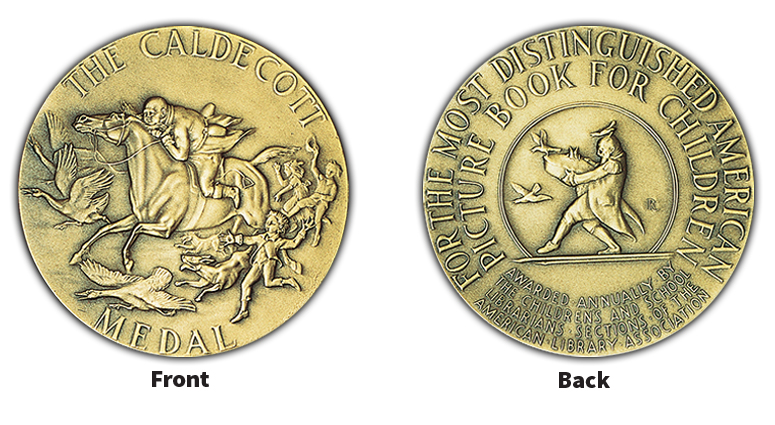Caldecott Medal is an annual award for the most distinguished picture book for children published during the previous year. It was the first award recognizing the work of the illustrator of a book. The award was established in 1937. It was first presented in 1938. The selection is made by a committee consisting of 15 members of the Association for Library Service to Children (ALSC) of the American Library Association. The winner is announced in January. The ALSC presents the award to the illustrator at the association’s annual conference.

The award is limited to artists who are U.S. citizens or residents, and whose work was published within the past year. The book must be the artist’s original creation. If two artists worked on it, the award is given to both. The artist does not have to write the story. The pictures, rather than the text, should be the heart of the book.
The face of the Caldecott Medal has a reproduction of Randolph Caldecott’s original illustration of John Gilpin’s ride from the famous narrative poem “The Diverting History of John Gilpin” by William Cowper. The other side has an illustration of “four and twenty blackbirds baked in a pie.” The engraving reads “For the most distinguished American picture book for children.”
Frederic G. Melcher, coeditor of Publishers’ Weekly magazine and founder of Children’s Book Week, established the medal. Caldecott, for whom the award was named, was an English illustrator of children’s books. Melcher also established the Newbery Medal, awarded for the most distinguished book written for children. The first Newbery Medal was awarded in 1922.
See also Caldecott, Randolph; Melcher, Frederic G.; Newbery Medal.
